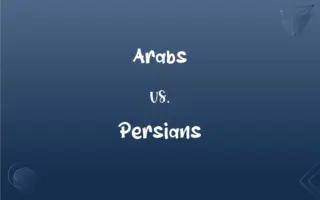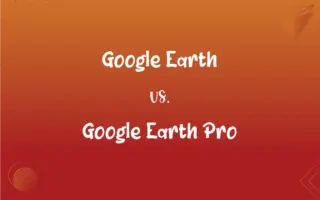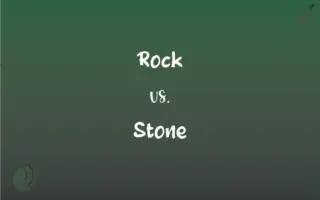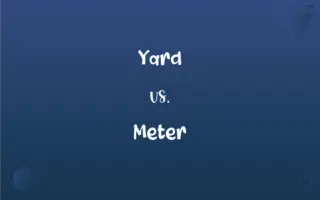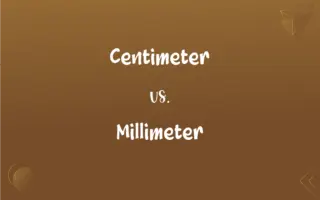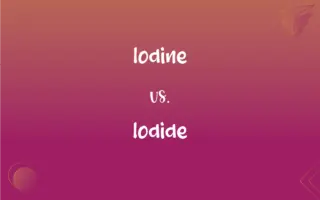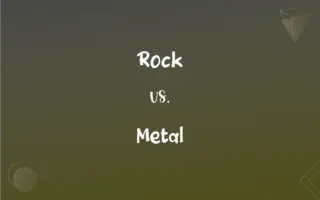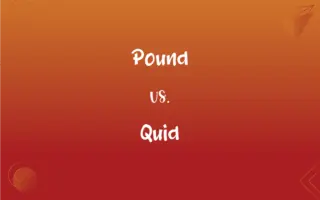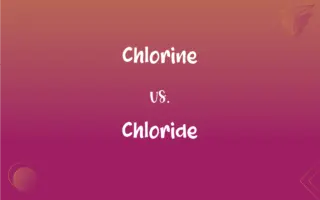Magma vs. Lava: What's the Difference?
Edited by Aimie Carlson || By Harlon Moss || Updated on October 9, 2023
Magma is molten rock beneath Earth's surface, while lava is magma that has erupted and flows on the surface.
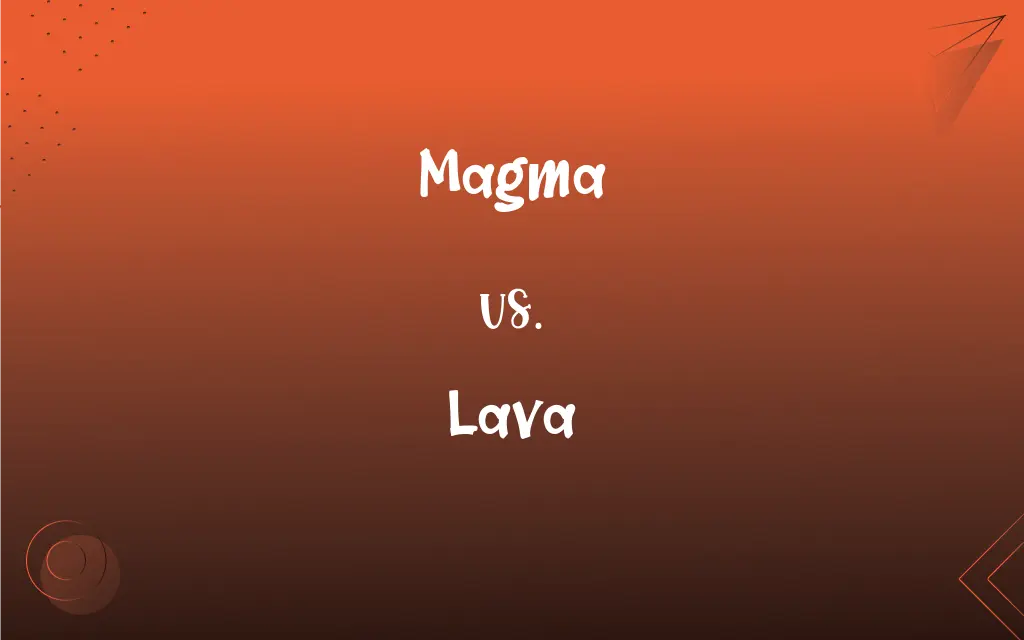
Key Differences
Magma is a hot, fluid mass of molten rock located beneath the Earth's crust. This geothermal substance possesses a complex, viscous nature and can contain a variety of elements, such as silicate, and may also house suspended crystals and gases. The accumulation and movement of magma underground create significant pressure, leading to volcanic activity when the pressure is forcefully released.
Lava, on the other hand, is the term used to describe magma once it has emerged from a volcanic eruption and is present on the Earth's surface. Upon eruption, magma transforms, becoming lava that can flow, ooze, or spurt, depending on its viscosity and gas content. The visibility of lava during volcanic eruptions serves as a stark contrast to the concealed nature of magma beneath the surface.
While magma resides silently beneath our feet, it plays a crucial role in shaping the geology of our planet. This molten rock forms in areas of high temperature and pressure within the Earth, such as beneath tectonic plate boundaries or hotspots. The solidification of magma beneath the Earth's surface leads to the creation of igneous rock, which forms the basis of our continents.
Lava, with its grand, often destructive emergence, plays a pivotal role in shaping landscapes and forming new land. Upon cooling and solidifying, lava also creates igneous rock, contributing to the formation of islands, mountains, and plains. Lava flows have been responsible for the creation of various geological formations and land masses throughout history, exhibiting the transformative power of Earth's geological processes.
Although magma and lava are the same substance in different locations, their interaction with the environment and subsequent geological roles are notably distinct. While magma's slow cooling beneath the surface forms coarse-grained rocks, lava's rapid cooling on the surface generates fine-grained rocks. Both magma and lava offer compelling insights into the Earth’s dynamic, ever-changing nature, revealing the potent energy stored beneath its crust.
ADVERTISEMENT
Comparison Chart
Location
Located beneath the Earth’s surface.
Exists on the Earth’s surface.
Cooling Process
Cools slowly, forming coarse-grained rocks.
Cools quickly, forming fine-grained rocks.
Visibility
Not visible without technological aid.
Visible and can be observed directly.
Interaction
Interacts with surrounding rock underground.
Interacts with the atmosphere and terrain.
Role in Rock Formation
Forms intrusive igneous rock.
Forms extrusive igneous rock.
ADVERTISEMENT
Magma and Lava Definitions
Magma
Magma forms through the melting of Earth’s mantle or crust.
Magma can accumulate in reservoirs, affecting the geology of the region.
Lava
Lava can exhibit various forms, such as pahoehoe and aa.
Pahoehoe lava is characterized by a smooth, billowy surface.
Magma
Magma is molten rock beneath Earth’s crust.
The magma chamber beneath the volcano is immense and active.
Lava
Lava is magma that has reached the Earth’s surface.
The lava flowed rapidly, covering the landscape in a thick, molten layer.
Magma
Magma can contain gases, crystals, and melted minerals.
Gases trapped in magma contribute to the explosive nature of some eruptions.
Lava
Lava cools and solidifies to form new land and rock formations.
The solidified lava created a new plateau, altering the local terrain.
Magma
Magma’s movement can cause geological activity, such as earthquakes.
The slow ascent of magma towards the surface caused a series of minor earthquakes.
Lava
Lava tubes can transport lava from a volcanic vent to a flow’s end.
Lava tubes provide a conduit, enabling lava to travel over considerable distances.
Magma
Magma cools slowly, forming various intrusive igneous rocks.
Granite is formed through the slow cooling of magma beneath the Earth’s surface.
Lava
Lava’s composition affects its viscosity and eruption style.
High-silica lava tends to be more viscous and erupt explosively.
Lava
Molten rock that reaches the earth's surface through a volcano or fissure.
Lava
The rock formed by the cooling and solidifying of molten rock.
Lava
The molten rock ejected by a volcano from its crater or fissured sides.
Lava
Magma.
Lava
A shade of red, named after the volcanic lava.
Lava
The melted rock ejected by a volcano from its top or fissured sides. It flows out in streams sometimes miles in length. It also issues from fissures in the earth's surface, and forms beds covering many square miles, as in the Northwestern United States.
Lava
Rock that in its molten form (as magma) issues from volcanos; lava is what magma is called when it reaches the surface
FAQs
How does magma form?
Magma forms through the partial melting of rock in the Earth's mantle or crust.
What is a magma chamber?
A magma chamber is a reservoir of magma within the Earth’s crust.
What is magma?
Magma is molten rock located beneath the Earth's surface.
Does lava only flow during eruptions?
Lava primarily flows during volcanic eruptions, but it can continue to ooze afterward.
What defines lava?
Lava is magma that has erupted and flows on the Earth's surface.
What happens when lava cools down?
When lava cools, it solidifies and forms igneous rock, such as basalt.
What dangers does lava present?
Lava can destroy structures, start fires, alter landscapes, and pose a threat to living organisms in its path.
Can humans cause magma to form?
Humans cannot create magma, as it forms naturally under extreme conditions within the Earth.
What role does magma play in Earth’s geology?
Magma plays a critical role in forming Earth’s crust and igneous rock, influencing geological activities.
Does magma only exist under volcanoes?
No, magma can exist in various locations beneath the Earth’s crust, not just under volcanoes.
Is all magma the same?
No, magma can vary in composition, temperature, and viscosity.
Are there uses for cooled lava?
Yes, cooled lava, in the form of igneous rock, can be used in construction, art, and landscaping.
How does lava create new land?
Lava can create new land by solidifying upon reaching the ocean or by accumulating and cooling during continual eruptions.
Can we utilize lava for energy?
Yes, geothermal energy can harness heat from volcanic regions, including areas with lava flows, for power generation.
Can lava vary in appearance and form?
Yes, lava can take various forms, such as smooth pahoehoe and rough aa, depending on its viscosity and cooling rate.
Can we find magma on Earth's surface?
No, once magma reaches the Earth's surface, it is referred to as lava.
Is lava always hot?
Lava is extremely hot when it erupts but gradually cools and solidifies upon exposure to air.
Can magma cause earthquakes?
Yes, the movement of magma underground can induce seismic activity, causing earthquakes.
How fast can lava flow?
Lava flow speeds can vary from being nearly stationary to moving at around 40 km/h (25 mph) in certain conditions.
What types of rock does magma form?
Magma forms intrusive igneous rock, such as granite, when it solidifies below the surface.
About Author
Written by
Harlon MossHarlon is a seasoned quality moderator and accomplished content writer for Difference Wiki. An alumnus of the prestigious University of California, he earned his degree in Computer Science. Leveraging his academic background, Harlon brings a meticulous and informed perspective to his work, ensuring content accuracy and excellence.
Edited by
Aimie CarlsonAimie Carlson, holding a master's degree in English literature, is a fervent English language enthusiast. She lends her writing talents to Difference Wiki, a prominent website that specializes in comparisons, offering readers insightful analyses that both captivate and inform.






